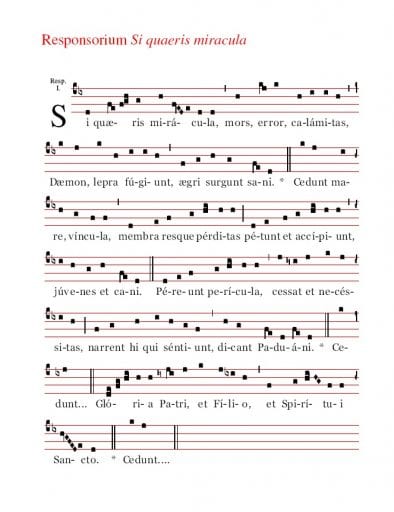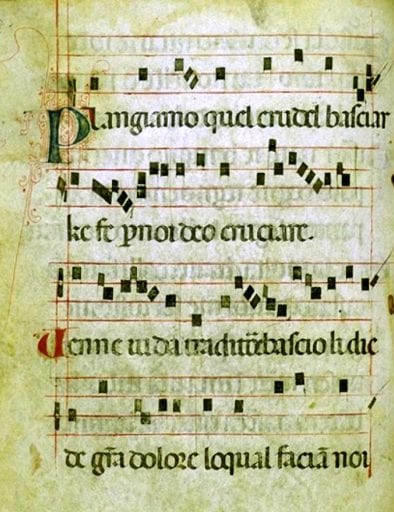
Music Itinerary
Comments are closed.

Germany

France

Italy
A last virtual route has to do with musical heritage, linking Germany, France and Italy, although research is still ongoing and other countries could join the effort.
Since the outset, Music and Franciscanism have formed a perfect union: the tam theoricam quam practicam of ‘Ars musica’ became a fundamental part of the proselytism and communication of the ideals of the Saint from Assisi and his ‘Order’. The traces of Franciscan presence in European musical circles between the Middle Ages and the Renaissance are conspicuous, starting with one of the greatest Franciscan exponents of the 13th century, the German Giuliano da Spira, the ‘Magister Cantus in the Regis Francorum’; from the Gregorian tradition to 13th-century metric music, from the Cantorino di Reims and its primitive polyphonies to the monadic lauds in the vernacular language of Cortona, from 14th-century ars novistiche (novel art) compositions to the mathematical speculation of ars subtilior (subtle art), and from 15th- and 16th-century lauds to 16th-century polyphonic architecture. The history of Mediaeval lauds bears testimony to the symbolic ‘marriage’ between music and the Order. It is the story of the development of a religious-devotional way of thinking and also of society at the time, in full political and cultural ferment: confraternities of a secular-bourgeois nature that required new lyrical-musical productions, guilds and urban artistic creation that took part in the birth of vernacular literature, as well as in the ideals of early Franciscanism.
It is in the manuscript preserved in the town of Cortona that we find the first examples of monodic music in the local dialect dedicated to Saint Francis of Assisi: Sia Laudato San Francesco, Laudar vollio per amore. This is seen over the centuries in these compositions, adapted for dissemination, so much so that they reach our age in the form of popular devotional extra-liturgical rituals such as Good Friday processions, especially in Central Italy. If the use of the vernacular effectively recalls the revolution started by the Franciscan Order, the history of music also testifies to how the use of Latin characterized the cultured nature of the Order itself. The Cantorino di Reims fits into this precisely, as part of the creation of a cosmopolitan ideal of the Franciscan movement that was able to disseminate its culture across Europe at the time.
| Cookie | Duration | Description |
|---|---|---|
| _GRECAPTCHA | 5 months 27 days | This cookie is set by the Google recaptcha service to identify bots to protect the website against malicious spam attacks. |
| cookielawinfo-checkbox-advertisement | 1 year | Set by the GDPR Cookie Consent plugin, this cookie is used to record the user consent for the cookies in the "Advertisement" category . |
| cookielawinfo-checkbox-analytics | 11 months | This cookie is set by GDPR Cookie Consent plugin. The cookie is used to store the user consent for the cookies in the category "Analytics". |
| cookielawinfo-checkbox-analytics | 11 months | This cookie is set by GDPR Cookie Consent plugin. The cookie is used to store the user consent for the cookies in the category "Analytics". |
| cookielawinfo-checkbox-functional | 11 months | The cookie is set by GDPR cookie consent to record the user consent for the cookies in the category "Functional". |
| cookielawinfo-checkbox-functional | 11 months | The cookie is set by GDPR cookie consent to record the user consent for the cookies in the category "Functional". |
| cookielawinfo-checkbox-necessary | 11 months | This cookie is set by GDPR Cookie Consent plugin. The cookies is used to store the user consent for the cookies in the category "Necessary". |
| cookielawinfo-checkbox-necessary | 11 months | This cookie is set by GDPR Cookie Consent plugin. The cookies is used to store the user consent for the cookies in the category "Necessary". |
| cookielawinfo-checkbox-others | 11 months | This cookie is set by GDPR Cookie Consent plugin. The cookie is used to store the user consent for the cookies in the category "Other. |
| cookielawinfo-checkbox-others | 11 months | This cookie is set by GDPR Cookie Consent plugin. The cookie is used to store the user consent for the cookies in the category "Other. |
| cookielawinfo-checkbox-performance | 11 months | This cookie is set by GDPR Cookie Consent plugin. The cookie is used to store the user consent for the cookies in the category "Performance". |
| cookielawinfo-checkbox-performance | 11 months | This cookie is set by GDPR Cookie Consent plugin. The cookie is used to store the user consent for the cookies in the category "Performance". |
| CookieLawInfoConsent | 1 year | Records the default button state of the corresponding category & the status of CCPA. It works only in coordination with the primary cookie. |
| PHPSESSID | session | This cookie is native to PHP applications. The cookie is used to store and identify a users' unique session ID for the purpose of managing user session on the website. The cookie is a session cookies and is deleted when all the browser windows are closed. |
| viewed_cookie_policy | 11 months | The cookie is set by the GDPR Cookie Consent plugin and is used to store whether or not user has consented to the use of cookies. It does not store any personal data. |
| viewed_cookie_policy | 11 months | The cookie is set by the GDPR Cookie Consent plugin and is used to store whether or not user has consented to the use of cookies. It does not store any personal data. |
| Cookie | Duration | Description |
|---|---|---|
| _ga | 2 years | The _ga cookie, installed by Google Analytics, calculates visitor, session and campaign data and also keeps track of site usage for the site's analytics report. The cookie stores information anonymously and assigns a randomly generated number to recognize unique visitors. |
| _gat_gtag_UA_170962946_46 | 1 minute | Set by Google to distinguish users. |
| _gid | 1 day | Installed by Google Analytics, _gid cookie stores information on how visitors use a website, while also creating an analytics report of the website's performance. Some of the data that are collected include the number of visitors, their source, and the pages they visit anonymously. |
| _hjAbsoluteSessionInProgress | 30 minutes | Hotjar sets this cookie to detect the first pageview session of a user. This is a True/False flag set by the cookie. |
| _hjFirstSeen | 30 minutes | Hotjar sets this cookie to identify a new user’s first session. It stores a true/false value, indicating whether it was the first time Hotjar saw this user. |
| _hjIncludedInPageviewSample | 2 minutes | Hotjar sets this cookie to know whether a user is included in the data sampling defined by the site's pageview limit. |
| _hjIncludedInSessionSample | 2 minutes | Hotjar sets this cookie to know whether a user is included in the data sampling defined by the site's daily session limit. |
| Cookie | Duration | Description |
|---|---|---|
| NID | 6 months | NID cookie, set by Google, is used for advertising purposes; to limit the number of times the user sees an ad, to mute unwanted ads, and to measure the effectiveness of ads. |
| Cookie | Duration | Description |
|---|---|---|
| _hjSession_2694293 | 30 minutes | No description |
| _hjSessionUser_2694293 | 1 year | No description |